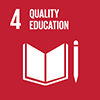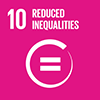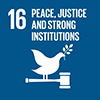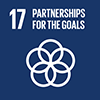Description/achievement of initiative
Language is the primary method of communicating information and knowledge and native language is a key to cultural identity and expression. To communicate, learn and work in one’s own language is a human right. Unequal development of our digital domain is driving many languages to extinction. Only 1,000 out of world's 7,000 native languages are supported online. This is because most of these languages are not yet digitized.
Our mission is to provide a roadmap and create resources for a digital ecosystem where all languages are equal and speakers can pursue educational, cultural and economic opportunities.
Implementation methodologies
Translation Commons aims to provide a reliable and scalable method of digitally rendering a language. We seek to solve the problem that unrepresented languages have in participating in a global communications network. We present a methodology that can easily be utilized by non-technical users to meet the particular needs of their language. Our network of volunteers comes from all language specializations, our educational network of universities and schools is rapidly expanding and our platform offers free training and practice for new linguists, putting Translation Commons in a unique position to be the Language Technology partner among the team of organizations striving for 100% global connectivity and addressing the UN Sustainable Development Goals. Our social-civil society partnership with International Year of Indigenous Languages and working with UNESCO has solidified our commitment to the next 12 years Action Plan for the International Decade of Indigenous Languages (2022-2032).
The main elements for Language Digitization are Technology, Linguistics, Education and Employment.
They are interconnected, for example:
- to digitize a keyboard (technology) you need a script (linguistics),
- to create a dictionary (linguistics) you need a lexicographer (education) and a database (technology),
- to create multilingual digital content (technology) you need linguists (employment),
- to train linguists (employment) you need Language Programs (education),
- to create Machine Translation Datasets (technology) you need content created by trained linguists (employment), etc.
The goal of this initiative is to bring together professionals, researchers, and language communities to support the digitization of endangered, indigenous, and minority languages, and to build capacity and professional networks to help all languages have equal opportunities online. This community-based approach will draw volunteers from every sector of the Language Industry and ensure the complete range of talents and skills.
In preparation for the Indigenous Languages Decade: 2022-2032, we are creating multiple Guidelines, Courses and Resources to cover the entire Language Digitization Roadmap. These guidelines will follow the same pattern and have easy to follow flowcharts like our "Indigenous Language: Zero to Digital" Guidelines. When they are all finished they will be able to fit together into a seamless single flowchart interconnecting technology and linguistic aspects of the roadmap and offering free resources, training and courses for indigenous communities to learn new language skills and make a living from it.
Arrangements for Capacity-Building and Technology Transfer
"Indigenous Language: Zero to Digital" Guidelines is a step-by-step document as technical guidelines on how to enable a language to be online. With two main flowcharts to show the basic workflows in digitization, it is very easy to follow and has a more technical section at the end for the technical implementation. By using questions answered with Yes-No, the communities are guided to the next step they need to undertake with the available resources and people. It offers concrete actions for each response, a guide to perform specific tasks, pointers to resources and tools and suggestions for next steps
Technology:
- Mapping Language Digitization Status
Action Plan
Identify measurable indicators to establish the digitization quotient for languages
Create database, requirements, resources, etc
Measure language digitization for each step of the roadmap
- Templates Creation
Action Plan
The aim is to create templates for communities to gather their own information and data, i.e. term template, dataset etc
2. Guidelines:
Action Plan
Following the “Indigenous Languages: Zero to Digital” framework and template, create Guidelines for as many steps of the roadmap:
Terminology: Zero to Digital
Revitalization: Zero to Digital
Datasets: Zero to Digital
Create list of required Guideline documents and recruit teams
All Guidelines will have flowcharts which will connect to each other
3. Courses
Action Plan
- Linguistic Training Programs
- eCoLo
- Certifications
- Webinar Exchange
- Interpreters Training
- Technology Training
4. Partnerships
- Partners Management
Action Plan
Create a framework for partnerships: "Maximizing the impact of partnerships for the SDGs"
Partnerships will need to bring tangible or intangible value to TC but clearly defined and measurable.
- Indigenous Communities
Action Plan
Create a group of Community Advisors and spokespeople for TC and our Programs giving us validation.
Community Portal
Coordination mechanisms/governance structure
The conceptualization of the Language Technology Roadmap and the first guidelines document created, "Indigenous Languages: Zero to Digital" present the global language community with a broad vision to bring together many diverse organizations, communities and institutions. It is a blueprint for all the other steps of each language's digital roadmap.
Partners will be creating guidelines which will be put together to create a continuous workflow during 2020 and 2021.
Progress can only be achieved when all of the aforementioned are bridged by a coordinating body. Translation Commons is pledged to build and maintain this bridge, providing the means for all language users to share equally in the opportunities offered by digital life. We are following and adapting the United Nations Department of Economic and Social Affairs (UNDESA) document "Maximizing the impact of partnerships for the SDGs" in order to support our partner organizations to maximize the value created and to agree on measurable reporting mechanisms.
Partners and key volunteers meet bi-weekly online, updating on ongoing resource creation and discussing new projects. Minutes are held and all documents are shared on a collaborative platform. Once a Resource/Guideline is finalized, it is made available at the Translation Commons website and all partners participate in a social media awareness campaign as well as presentations and participation in conference and events.
Partner(s)
Translation Commons, Individual Volunteers, Endangered Languages Project, Unicode







 December 2020
December 2020
 December 2020
December 2020
 December 2021
December 2021
 December 2021
December 2021
 Time-frame: January 2019 - December 2021
Time-frame: January 2019 - December 2021